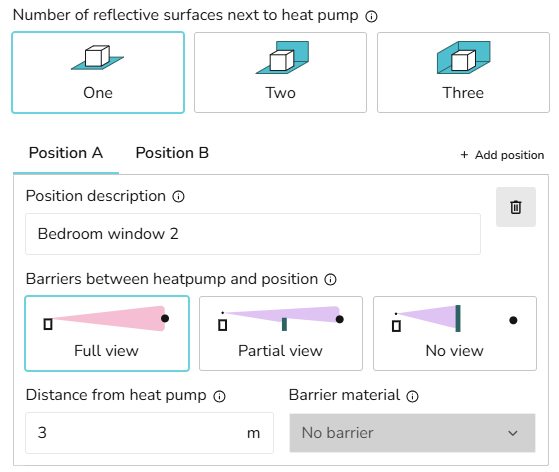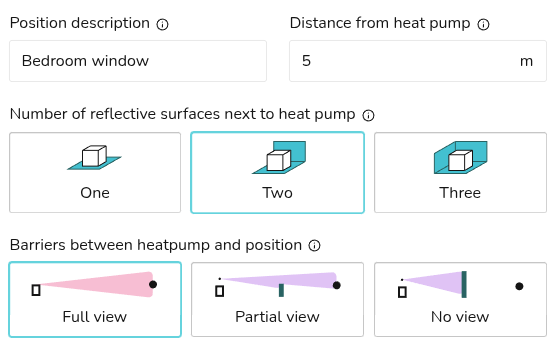Sound Check (Heatpunk UK)
This guide applies to the heatpunk.co.uk version of Heatpunk. The information provided here maydoes not beapply accurate forto heatpunk.ie.
The sound check feature is part of the Heat Pump task and helps determinesdetermine whether the planned installation position will generate excessive noise that could disturb neighbouring properties. The results of the sound check will be displayed in the customer proposal and technical reports.
GettingCompleting startedthe sound assessment
When you create a new project you will be prompted to complete the sound check when you navigate to the heat pump task.task.
- Choose the assessment method suitable for your
projectproject. - Input the details about the heat pump position and assessment points.
ClickAfternextselecting the kit you would like tomoveuse ontotheselect a heat pump and hot water cylinderTheheat pump overview pagewill load andproject, the results of the sound check willbe displayeddisplay on the left hand side of the page below the heat pump and cylinder details.
To edit the details of the sound check click on the pencil icon.
Information aboutto the availabletop right of the results.
Different calculation methods
Make sure you use the appropriate assessment method. There are currently two sound assessment calculation methods published by MCS. Please ensure you use the calculation method that is suitable for the location of the property.
There are currently two sound assessment calculation methods published by MCS. England's permittedPermitted developmentDevelopment regulationsRights now require you to use the 2025 calculation method which is based on MCS 020 a). Other UK nationsnations, where they have not changed their Permitted Development Rights, may still require you to use the legacy calculation method based on MCS 020. Please contact your local planning authority if theyyou haveare notunsure adoptedwhich themethod newerto calculationuse. method.
When you start the sound check for your project you can choose between the newer 2025 calculation method or the legacy calculation method.
Using the 2025 calculation method - MCS 020 a)
To comply with MCS 020 a), the calculated noise level at each assessment position must be below 37 dB. Under MCS 020 a), it is vital to include multiple assessment positions,positions, as more distant locations without a barrier may experience higher noise levels than closer positions that are shielded.
- In order to comply with MCS 020 a) standard, start by selecting the 2025 calculation method.
- Select the number of reflective surfaces next to the heat pump.
- Add details for the first assessment position, including the description, distance and details of any barriers.
- Add additional assessment positions by clicking + Add position.
- Delete any positions you no longer need using the dustbin icon.
- Click Confirm to view the sound check results.
See MCS guidelines for further information on the calculation.
Using the legacy calculation method - MCS 020
To comply with the legacy MCS 020 standard, the noise level at a single assessment position must be below 42 dB. Although MCS 020 is being phased out, it may be remain appropriate to use in some UK nations.
Using the 2025 calculation method - MCS 020 a)
In order to comply with the newer MCS 020 a) standards, start by selecting the2025 calculation methodSelect the number ofreflective surfacesnext to the heat pump.Add details for the first assessment position, including the description, distance and details of any barriers.Add additional assessment positions by clicking on theAdd positionbutton.View each of the assessment positions using thenavigation tabsRemove any positions you no longer need using thedeletebutton.Click theconfirmbutton to view the sound check results
Using the legacy calculation method - MCS 020
- In order to comply with the previous MCS 020 standards, select the legacy calculation method.
- Add details for the assessment
position,position, including the description, distance, number of reflective surfaces and details of any barriers. - Click
theconfirmbuttonto view the sound check results.
See MCS guidelines for further information on the calculation.



